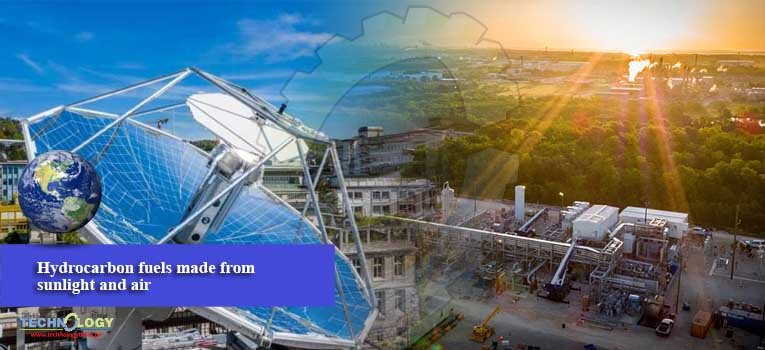ETH researchers developed a solar plant to produce synthetic liquid fuels that release CO2 during their combustion as previously extracted from the air for their production.
 CO2 and water are extracted directly from air and split using solar energy. This process yields syngas, a mixture of hydrogen and carbon monoxide, which is subsequently processed into kerosene, methanol or other hydrocarbons.
CO2 and water are extracted directly from air and split using solar energy. This process yields syngas, a mixture of hydrogen and carbon monoxide, which is subsequently processed into kerosene, methanol or other hydrocarbons.
Steinfeld, Professor of Renewable Energy told “This plant proves that carbon-neutral hydrocarbon fuels can be made from sunlight and air under real field conditions.”
He further explained that “the thermochemical process utilizes the entire solar spectrum and proceeds at high temperatures, enabling fast reactions and high efficiency.”
The solar mini-refinery on the roof of ETH Zurich proves that the technology is feasible, even under the climate conditions prevalent in Zurich. It produces around one decilitre of fuel per day.
The process chain of the new system combines three thermochemical conversion processes: Firstly, the extraction of CO2 and water from the air.
Secondly, the solar-thermochemical splitting of CO2 and water. Thirdly, their subsequent liquefaction into hydrocarbons. CO2 and water are extracted directly from ambient air via an adsorption/desorption process.
Both are then fed into the solar reactor at the focus of a parabolic reflector. Solar radiation is concentrated by a factor of 3,000, generating process heat at a temperature of 1,500 degrees Celsius inside the solar reactor.
At the heart of the solar reactor is a ceramic structure made of cerium oxide, which enables a two-step reaction – the redox cycle – to split water and CO2 into syngas.